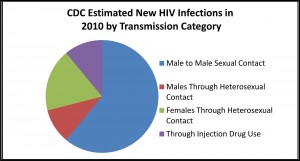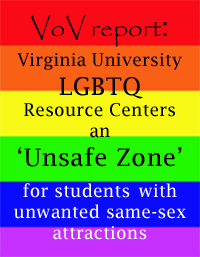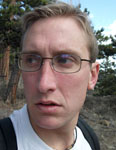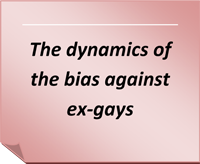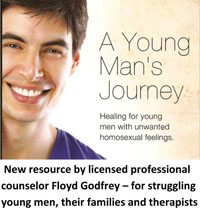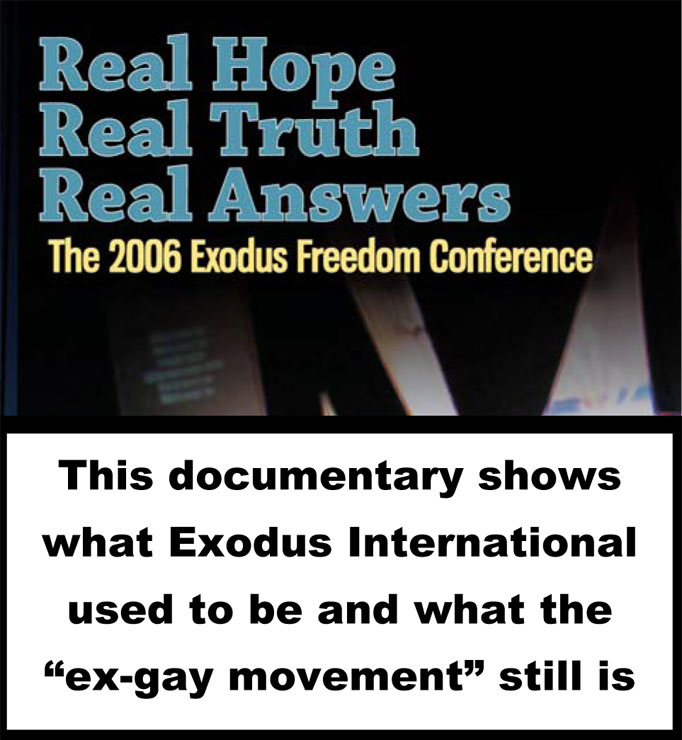Male Homosexual Risks
“The Male Homosexual Subculture is Growing and is at 150 Times Greater HIV Risk”
By Thomas Coy, M.L.S.
2012
(Published as “The smokescreen putting young men’s health at risk” November 13, 2012 on www.mercatornet.com)
PDF Version of Article
Recent statistics from the Centers for Disease Control and Prevention (CDC) on HIV infection in the United States reveal some disturbing trends concerning gay males or, in CDC terminology, “men who have sex with men” (MSM). In recent data the CDC estimated that 61 percent of the 48,079 HIV infections diagnosed in 2010 occurred through male to male sexual contact.(1) According to the CDC data, sexual contact and injection drug use are the predominant means by which HIV is transmitted.
The CDC data on HIV diagnoses came from forty-six states and five U.S. dependent areas. 29,194 new HIV diagnoses in 2010 were linked to male homosexual contact where no injection drug use took place. There were approximately 4550 HIV male diagnoses linked to heterosexual contact. Injection drug use was involved in 5481 cases. Women contracting the HIV virus through heterosexual contact accounted for approximately 8,800 cases. 47 HIV cases came from sources other than the four listed. Included in the other 47 cases were blood transfusions and prenatal exposure.(2) When CDC statistics are analyzed using the estimate of the MSM population at 4 percent of the American male population and assuming the other 96 percent who do not have sex with men are heterosexual, the risk of HIV infection from sexual contact for MSM was approximately 150 times greater than the heterosexual male population in 2010.(3)
To put the HIV risk for MSM into perspective a comparison with the health risks of smoking can be made. Smoking tobacco is a causative factor of many types of cancer, the most common being lung cancer. According to the CDC the risk of lung cancer for men who smoke is 23 times greater than for men who do not smoke. For women who smoke the risk is 13 times greater than for women who do not. Those who smoke are also 2 to 4 times more likely to suffer coronary heart disease and 2 to 4 times more likely to suffer a stroke.(4)
Because of the increased health risk caused by tobacco use the government discourages children and adolescents from smoking by providing educational programs advanced through the public education system. The government has continually raised taxes on cigarettes and requires strong warnings on cigarette packaging. Current CDC television ads to discourage smoking show people who have had strokes, heart attacks, and cancer; diseases that are expressly linked to their history of smoking.(5) The images of the later stages of disease are graphic and serve as effective tools to discourage youth as well as adults from smoking.
Current efforts by the government to prevent the transmission of HIV and sexually transmitted disease include advising people to “abstain from sexual activity or be in a long-term mutually monogamous relationship with an uninfected partner,” and to use condoms correctly.(6) Federal funds are allocated to organizations serving the gay and lesbian community to increase HIV awareness,(7) but there are no public education programs that seek to lower HIV transmission by educating youth on how much greater the health risks of male homosexual behavior are versus heterosexual behavior and there are no ads that show the later stages of AIDS.
Similar to smoking, homosexual behavior has other unhealthy side effects. The CDC stated that the rate of primary and secondary syphilis among MSM is “more than 46 times that of other men and more than 71 times that of women.”(8) Studies have shown that MSM are at higher risk of alcohol and drug abuse, anxiety, major depression, and thoughts of suicide.(9)
Instead of discouraging homosexual behavior like smoking is discouraged, key elements of American society have been promoting homosexuality as a viable and safe option to heterosexuality. Gay organizations and gay influence in the government, the media, the mental health associations, academia, and the teachers’ union have all played significant roles in America’s normalization of homosexuality. All too often, gay political ideals have been given priority over the physical and mental health of sexually confused youth. In addition, family therapy advances in the prevention of homosexuality have been marginalized to the extent that the general public is not even aware that they exist.
The result has been increased sexually transmitted disease in young males identifying as gay and a significant increase in males identifying as gay. In 2010 the CDC estimated the percentage of MSM to be 4 percent of the United States male population (range: 2.8 to 5.3 percent).(10) In contrast, the 1993 Alan Guttmacher Institute study on male sexual behavior estimated the MSM population at 1.8 to 2.8 percent of the U.S. male population.(11) If the CDC figure is correct, these two figures suggest that the percentage of MSM to the American male population has doubled in the last twenty years. Another CDC statistic stated the incidence of HIV has increased dramatically in adolescent males and young men. “Whereas new HIV infections were relatively stable among MSM from 2006–2009, they increased 34% among young MSM—an increase largely due to a 48% increase among young black/African American MSM aged 13–29.”(12)
It is not politically correct to talk about these statistics with reference to the behavior behind the statistics. They reflect both a health crisis and a cultural crisis. If America can actively promote non-smoking because of the health risks of smoking, shouldn’t America have programs to guide sexually confused male adolescents into heterosexuality?
(Thomas Coy earned his Master of Liberal Studies with a major in American culture at the University of Michigan-Flint in 2012. His master’s thesis was titled “The Professional Division Over the Treatment of Homosexuality and How It Has Been Influenced by the Gay Political Movement.”)
References
(1) Centers for Disease Control and Prevention (last modified March 12, 2012). “HIV Surveillance – Epidemiology of HIV Infection (through 2010).” PowerPoint presentation slide 4. Retrieved from http://www.cdc.gov/hiv/topics/surveillance/resources/slides/general/index.htm on June 7, 2012.
(2) Centers for Disease Control and Prevention (last modified March 12, 2012). “HIV Surveillance – Epidemiology of HIV Infection (through 2010).” PowerPoint presentation slides 2, 5, and 8. Retrieved from http://www.cdc.gov/hiv/topics/surveillance/resources/slides/general/index.htm on June 7, 2012. The CDC did not explicitly give the number of diagnosed HIV infections for male heterosexuals linked to sexual contact with women. It did give the total number of male HIV diagnoses at 37,910 and state that the percentage of HIV infection from heterosexual contact was 12 percent, which yields an approximate figure of 4,550.
(3) The approximately 150 times greater risk factor can be calculated by using the 2010 U.S. census figure of 151.8 million males and using the CDC 4% of the male population figure for MSM (6.072 million) and assuming the other 96% are heterosexual (145.728 million). In 2010 29,194 HIV cases were transmitted by males having sex with males in the MSM population of 6.072 million. In 2010 approximately 4,550 HIV cases were transmitted by heterosexual contact to the heterosexual male population of 145.728 million. So in 2010 1 in every 208 MSM became newly HIV infected through male to male sexual contact and 1 in every 32,028 male heterosexuals became newly HIV infected through heterosexual contact. If the incidence ratio of MSM sexually transmitted HIV diagnoses 1/208 is divided by the incidence ratio of male heterosexually transmitted diagnoses1/32,028, the risk of getting HIV from sexual behavior was 154 times greater for MSM than for heterosexual males in 2010. Statistics regarding injection drug users were omitted in this comparison.
(4) Centers for Disease Control and Prevention (last update January 10, 2012). “Smoking and Tobacco Use.” Retrieved from http://www.cdc.gov/tobacco/data_statistics/fact_sheets/health_effects/effects_cig_smoking/index.htm on May 23, 2012.
(5) Centers for Disease Control and Prevention (last updated May 18, 2012). “Tips From Former Smokers – Videos.” Retrieved from http://www.cdc.gov/tobacco/campaign/tips/resources/videos/ on June 3, 2012.
(6) Centers for Disease Control and Prevention (last modified April 11, 2012). “Basic Information about HIV and AIDS.” Retrieved from http://www.cdc.gov/hiv/topics/basic/index.htm on June 4, 2012.
(7) Centers for Disease Control and Prevention (last modified May 25, 2012). “Funding Opportunity Announcement: PS12-1211 Enhancing HIV Mobilization among Organizations Serving Gay, Bisexual and other Men Who Have Sex with Men.” Retrieved from http://www.cdc.gov/hiv/topics/funding/PS12-1211/index.htm on June 4, 2012.
(8) Centers for Disease Control and Prevention (March 10, 2010). “CDC Analysis Provides New Look at Disproportionate Impact of HIV and Syphilis Among U.S. Gay and Bisexual Men.” Retrieved from http://www.cdc.gov/nchhstp/newsroom/msmpressrelease.html on May 29, 2012.
(9) Phelan, James E., Neil Whitehead, and Philip M. Sutton (2009). “Response to APA Claim: There Is No Greater Pathology in the Homosexual Population Than in the General Population.” Journal of Human Sexuality, Volume 1, 53-88. Retrieved from http://www.unav.es/icf/main/top/diciembre09/Narth_What-research-shows-homosexuality.pdf on May 23, 2012. One of the studies referenced was Gilman, S. E., et al. (2001). “Risk of psychiatric disorders among individuals reporting same-sex partners in the National Comorbidity Survey. American Journal of Public Health, 91, 933-939.
(10) Centers for Disease Control and Prevention (March 10, 2010). “CDC Analysis Provides New Look at Disproportionate Impact of HIV and Syphilis Among U.S. Gay and Bisexual Men.”
(11) Barringer, Felicity (April 15, 1993). “Sex Survey of American Men Finds 1% Are Gay.” New York Times. Retrieved from http://www.nytimes.com/1993/04/15/us/sex-survey-of-american-men-finds-1-are-gay.html?pagewanted=all&src=pm on May 25, 2012. The Alan Guttmacher Institute study on male sexual behavior was financed by a $1.8 million grant from the National Institute of Child Health and Human Development.
(12) Centers for Disease Control and Prevention (last updated May 18, 2012). “HIV among Gay and Bisexual Men.” Retrieved from http://www.cdc.gov/hiv/topics/msm/index.htm on June 6, 2012.
